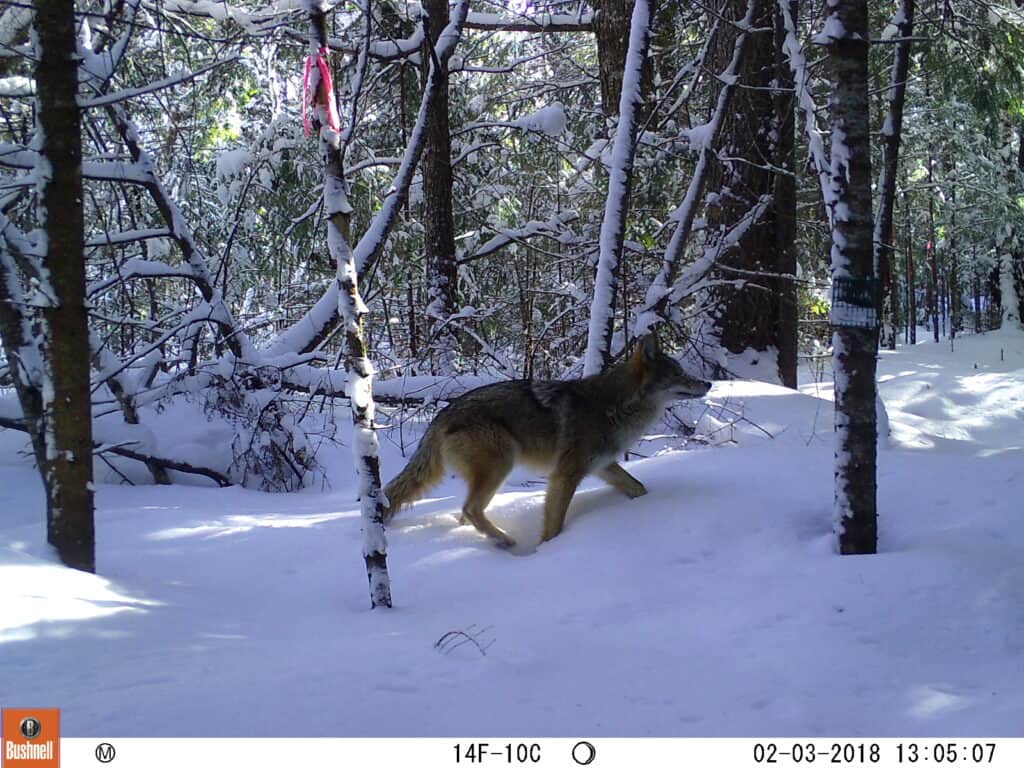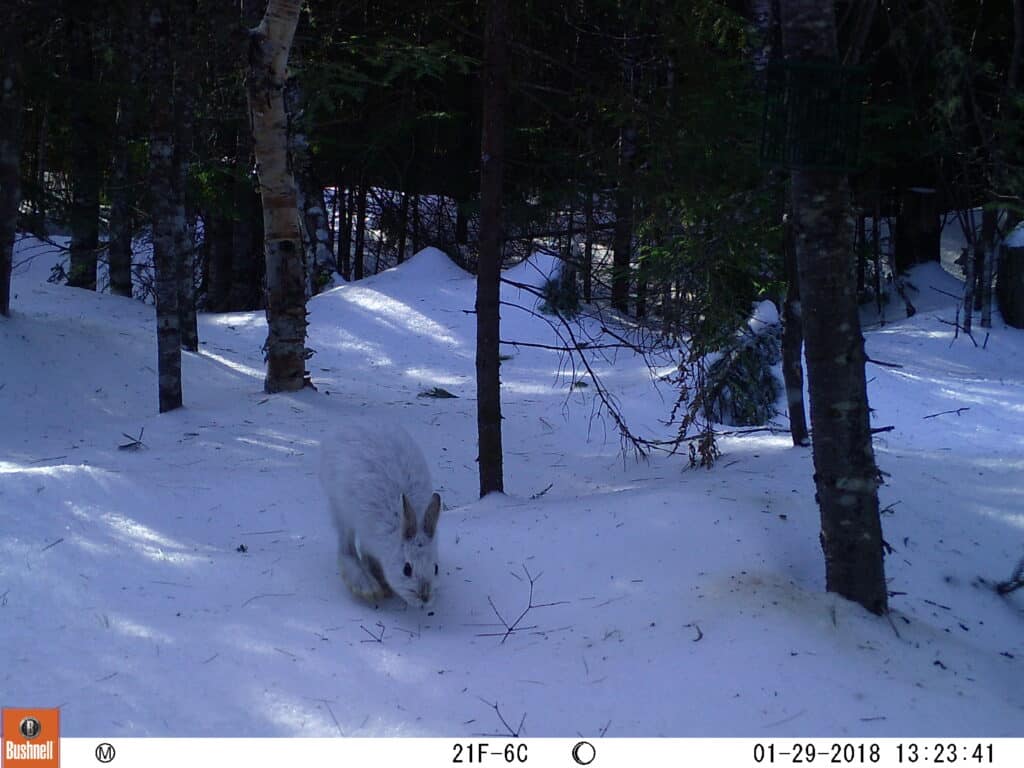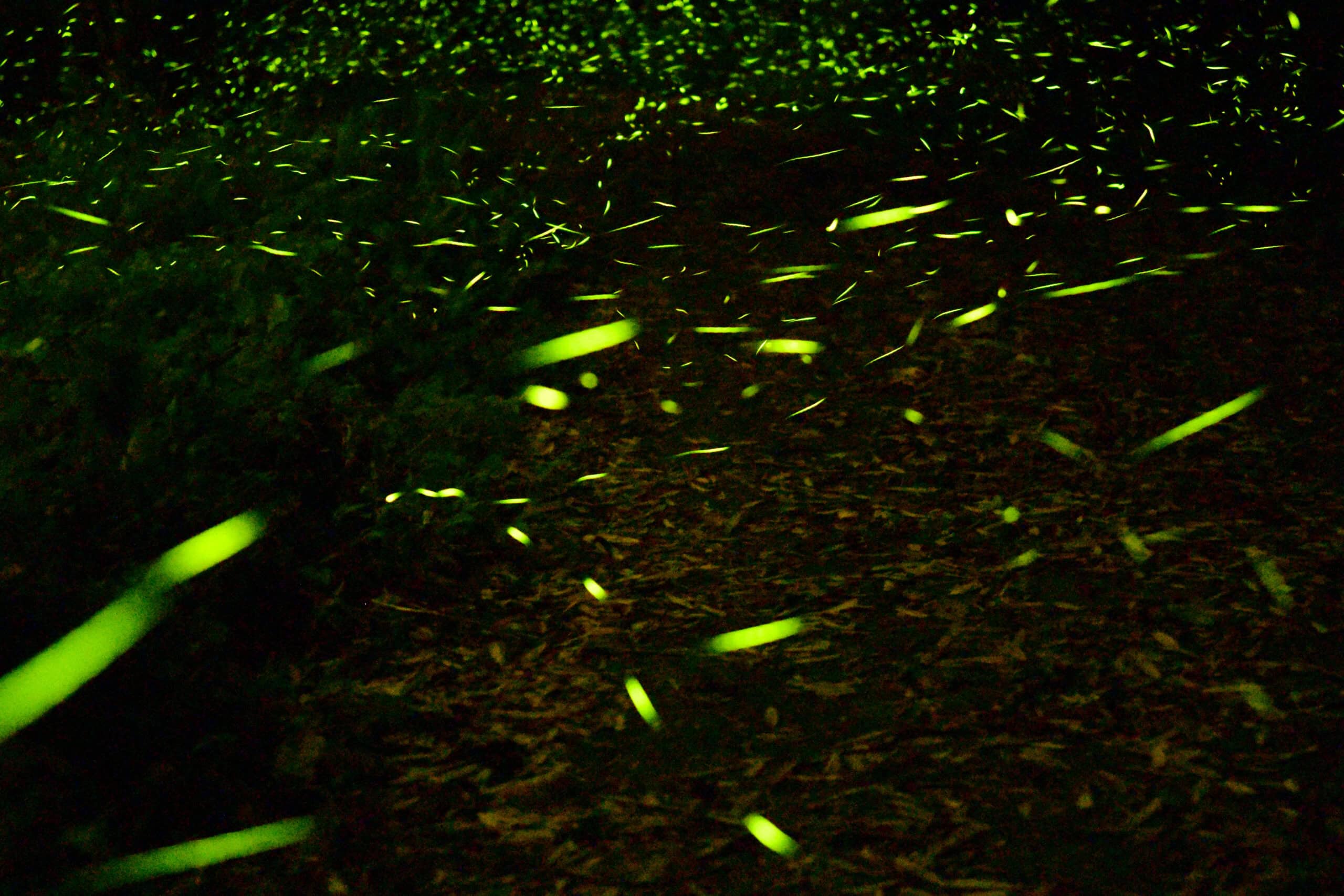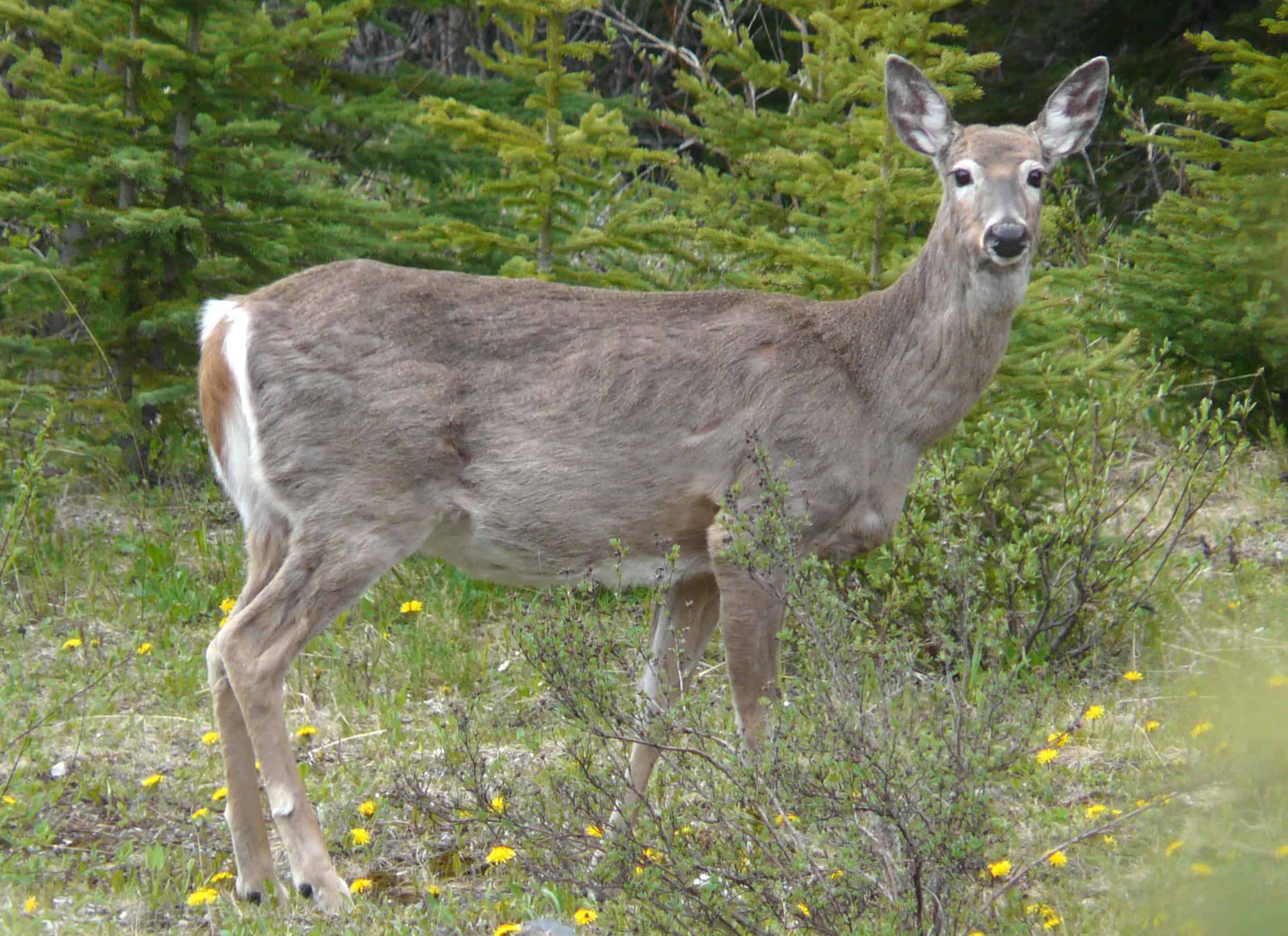Share this article
Wildlife Featured in this article
- Red fox
- Coyote
- Snowshoe hare
Deep snows deter red foxes
Frequent, larger snow events brought on by climate change could reduce fox populations
Big, one-off snowstorms in Maine driven by climate change could result in snow too deep for red foxes.
As smaller carnivores, red foxes (Vulpes vulpes) are affected by species across the food web, from fellow predators like coyotes (Canis latrans) to prey like snowshoe hares (Lepus americanus). “That makes them a good sentinel species,” said Andrew Butler, a PhD candidate at the University of New Hampshire. But, like other animals, they are also affected by conditions on the ground.
Butler led a study published in Ecosphere using camera traps to look at how the presence of coyotes and snowshoe hares related to red fox abundance, and what role snow depth may play.

The team combed through photos of martens (Martes americana), fishers (Pekania pennant) and black bears (Ursus americanus) in addition to their target species. “I think it really highlights how dynamic and complex that community is in northern New England,” he said.
Researchers expected that with more coyotes present, they would find fewer red foxes. Previous studies had found that coyotes prey on red foxes—not for food, but to eliminate competition. Instead, Butler’s team found that red foxes might benefit from sharing the landscape with coyotes by scavenging the leftovers on deer (Odocoileus virginianus) carcasses that coyotes left behind.

Butler and his team also expected to see more foxes when there were more snowshoe hares, which past research found to be the foxes’ main food source in the winter. But his team actually found hares showing up in areas without red foxes. They think that has something to do with red foxes not being able to hunt in of the dense stands of young spruce that the hares occupy.
More than either predators or prey, however, it was snow depth that had the strongest relationship with red fox abundance. In the second and third years of the study, when snow depths topped one meter, there was less than a 20% probability the red foxes would colonize the site. That suggests climate change could be a mixed bag for red foxes in the state. “Overall, predictions are for less snowfall, which may allow foxes to expand,” Butler said. “But there’s also more predictions for more frequent, larger snow events.”
Header Image: Snow depth had the strongest relationship with red fox abundance. Credit: University of Maine








